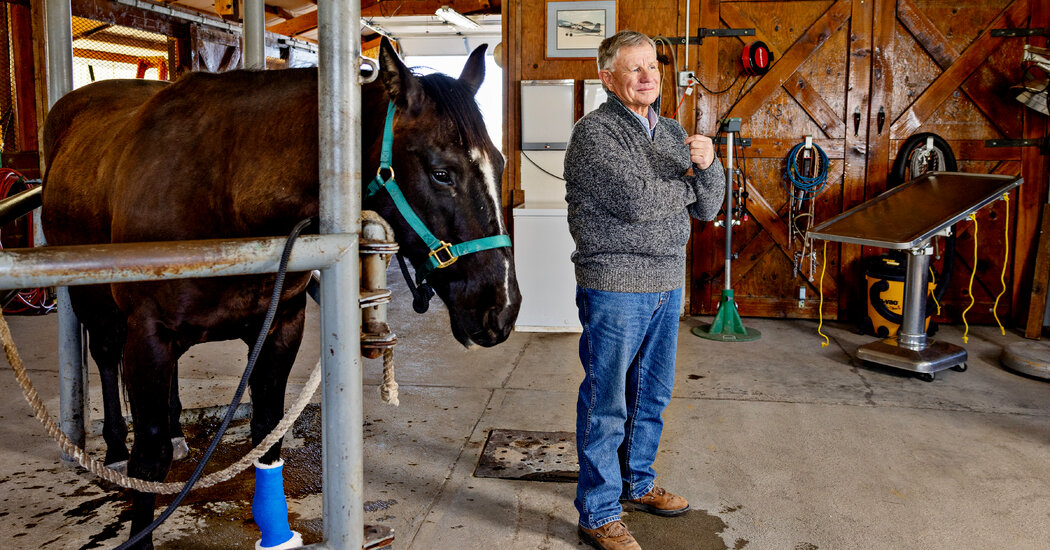As World Warms, Droughts Come On Faster, Study Finds
Flash droughts, the kind that arrive quickly and can lay waste to crops in a matter of weeks, are becoming more common and faster to develop around the world, and human-caused climate change is a major reason, a new scientific study has found.
As global warming continues, more abrupt dry spells could have grave consequences for people in humid regions whose livelihoods depend on rain-fed agriculture. The study found that flash droughts occurred more often than slower ones in parts of tropical places like India, Southeast Asia, sub-Saharan Africa and the Amazon basin.
But “even for slow droughts, the onset speed has been increasing,” said Xing Yuan, a hydrologist at Nanjing University of Information Science and Technology in China and lead author of the new study, which was published Thursday in Science. In other words, droughts of all kinds are coming on more speedily, straining forecasters’ ability to anticipate them and communities’ ability to cope.
The world has probably always experienced rapid-onset droughts, but only in the past decade or two have they become a significant focus of scientific research. New data sources and advances in computer modeling have allowed scientists to home in on the complex physical processes behind them. The concept also gained attention in 2012 after a severe drought charged across the United States, ravaging farm fields and pastures and causing over $30 billion in losses, most of them in agriculture.
In general, this kind of rapid drying occurs when it is warm and rain would normally be falling but very little is, said Andrew Hoell, a climate scientist with the National Oceanic and Atmospheric Administration who was not involved in the new research but has contributed to other studies on the subject.
In such circumstances, the ground might already be wet from earlier rain or snow, Dr. Hoell said. So when the precipitation suddenly shuts off, hot, sunny and windy conditions can cause large amounts of water to evaporate quickly.
This is why the humid tropics tend to experience more flash droughts than slow ones. The wet seasons there are usually rainy enough to keep land and vegetation damp. But when the rains fail unexpectedly, the equatorial heat can desiccate the ground to devastating effect.
As the burning of fossil fuels warms the planet, droughts of all kinds are becoming more likely in many places, simply because more evaporation can take place. But scientists hadn’t pinned down whether both flash droughts and slow droughts were becoming more common at the same pace, or whether there was a transition from one type to the other.
Dr. Yuan and his colleagues looked at data from computer models on soil moisture worldwide between 1951 and 2014. They focused on drought episodes that were 20 days or longer, to exclude dry spells that were too short to cause much harm.
The trends varied from place to place, but, looked at globally, they show a shift toward more frequent and more rapid flash droughts. Dr. Yuan and his co-authors found that these trends were well captured in computer simulations that took into account both human-caused emissions of heat-trapping gases and natural variations in the global climate, including from volcanic eruptions and changes in solar radiation. But the trends did not appear as clearly in simulations that included only the natural variations. This suggests that human-induced climate change has been a factor.
In the coming decades, even if global warming increases only relatively modestly, flash droughts will become even more common and speedier in almost every region of the globe, the study predicted.
Scientists still need to improve their understanding of what drives individual dry spells, Dr. Yuan said. Droughts involve heat and rainfall, but also local factors such as topography, vegetation and soil type. A better grasp on the interplay between these elements would help forecasters issue timelier warnings to growers and water managers.
“We do a reasonable job in most places at looking at what the weather’s going to be over the next couple of days, potentially out to a week,” said Justin Sheffield, a professor of hydrology and remote sensing at the University of Southampton in England and another author of the new study. “And we do a reasonable job at saying something about what’s happening over seasons.”
In between, he said, is where scientists’ forecasting skills need work. “At the moment, I think we’re way off.”
Jordan I. Christian, a postdoctoral researcher in meteorology at the University of Oklahoma who wasn’t involved in the new study, got a front-row seat to a severe flash drought in Oklahoma and the Southern Plains last summer.
“Precipitation was good. Soil moisture was good. Vegetation was very green. It’s looking great,” he said. “And then, two or three weeks later, you just see the ecosystem and the environment struggling. Honestly, it’s really just crazy to see that happening.”


